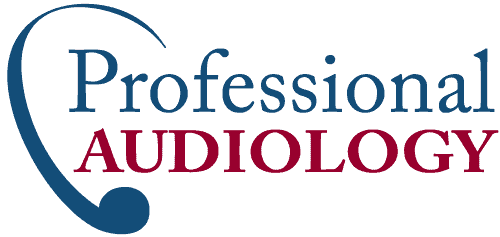Hearing loss in children can significantly impact their language development, education, and social interactions. Finding the right hearing aids can make a world of difference in a child’s life. Hearing aids for children are not a one-size-fits-all solution. Several factors such as the degree of hearing loss, the child’s age, lifestyle, and the presence of any additional disabilities should influence the choice.
Let’s explore some explore the best hearing aid types and features to consider for your child.
Behind-The-Ear (BTE) Hearing Aids
Behind-the-Ear (BTE) hearing aids are the most commonly recommended type for children. They’re ideal for children because they’re durable, easy to clean, and can accommodate new ear molds as your child grows. These devices have an external casing that sits behind the ear and a clear tube that connects to an ear mold inside the ear canal. They are versatile enough to support mild to profound hearing loss.
Receiver-In-Canal (RIC) Hearing Aids
Receiver-In-Canal (RIC) hearing aids are similar to BTE hearing aids but are generally a little smaller. This is because the speaker (or receiver) is placed in the ear canal, meaning fewer components are housed in the casing behind the ear. RIC devices might not be suitable for very young children due to their small size and the dexterity needed to handle them.
In-The-Ear (ITE) Hearing Aids
While In-The-Ear (ITE) aids are less common for children, some older kids and teenagers prefer them for their less visible profile. ITE hearing aids fit within the outer portion of the ear canal and are custom-made to fit the child’s ear. However, they are not recommended for very young children who are still growing rapidly, as they may quickly outgrow the molded fit.
Hearing Aid Features to Consider
When choosing hearing aids for your child, there are a few specific features you’ll want to think about:
- Safety: Pediatric hearing aids come with tamper-resistant battery doors to protect against accidental ingestion and hypoallergenic materials that are safe for children’s skin.
- Durability: Children are often active and may not always be gentle with their devices. Durable materials and robust construction are things to look for in hearing aids.
- Directional Microphones: This feature allows for better understanding of speech in noise, which is essential in classroom settings.
- Connectivity: Many hearing aids now offer wireless connectivity, which can be used to connect directly to smartphones, classroom FM systems, and other assistive listening devices.
- Volume Control Lock: This is a great way to make sure a child cannot accidentally turn the volume too high or too low.
- LED Indicator Lights: To help caregivers ensure the hearing aids are functioning correctly, many pediatric hearing aids have indicator lights.
The Importance of Customization
Children with hearing loss have unique needs, and the best hearing aid is one that fits seamlessly into their daily routine. We will program hearing aids to match your child’s specific hearing loss profile and we can adjust them as necessary over time.
Regular Check-ups and Adjustments
It’s important to schedule regular appointments with a hearing health professional for check-ups and hearing aid adjustments. Children grow rapidly, and their ears are no exception; this could mean earmolds need to be replaced several times a year for a proper fit.
The Emotional and Social Component
Children might have reservations about wearing hearing aids due to fear of standing out or being teased. Selecting hearing aids with a design that appeals to a child—such as colorful models or one that matches skin and hair tones—can make a significant difference in their confidence and willingness to wear them.
Prioritize Your Child’s Hearing Health
You can help your child get the best start in life with hearing aids that match their needs. Open a world of possibilities by considering the various styles, features, and personalization options available. Early intervention is crucial for managing hearing loss in children.
The right hearing aid can enhance your child’s hearing, language development, and educational outcomes. If you suspect your child might be experiencing hearing issues, visit us for a hearing test and get personalized advice on the best hearing aids for your child’s needs. With professional guidance, you can make sure your child has the hearing support they deserve.





